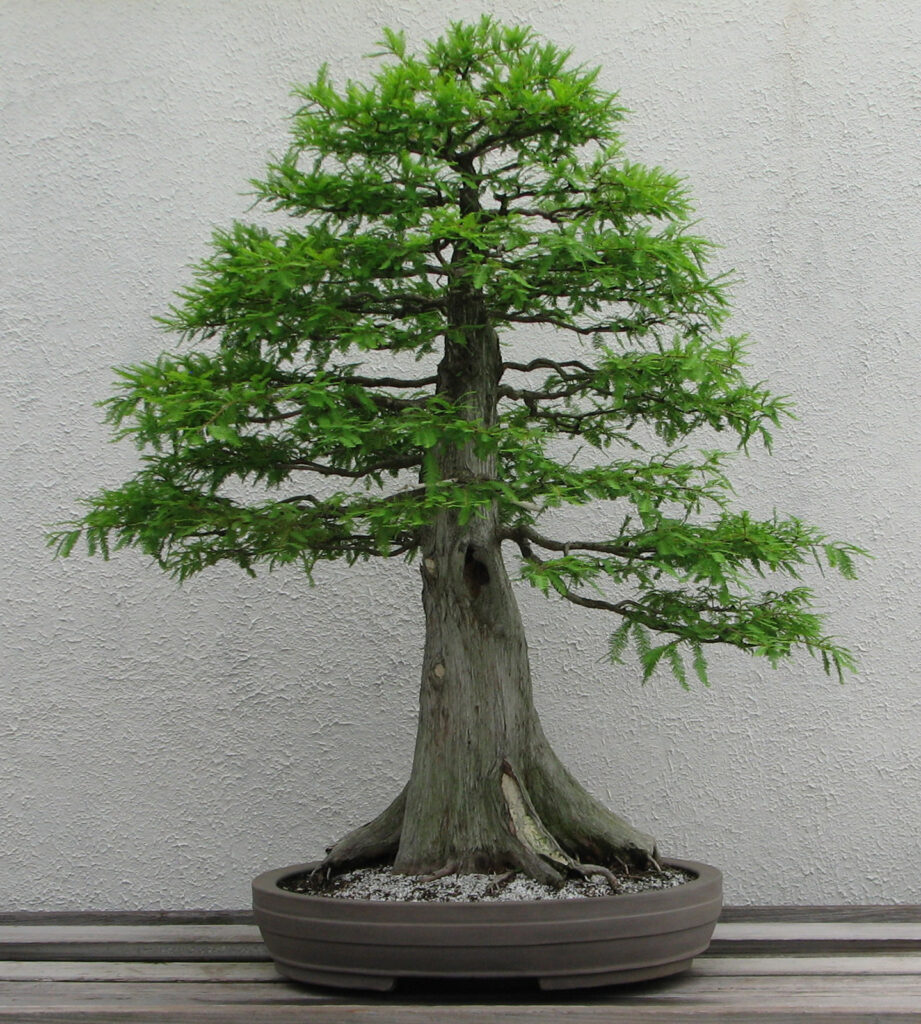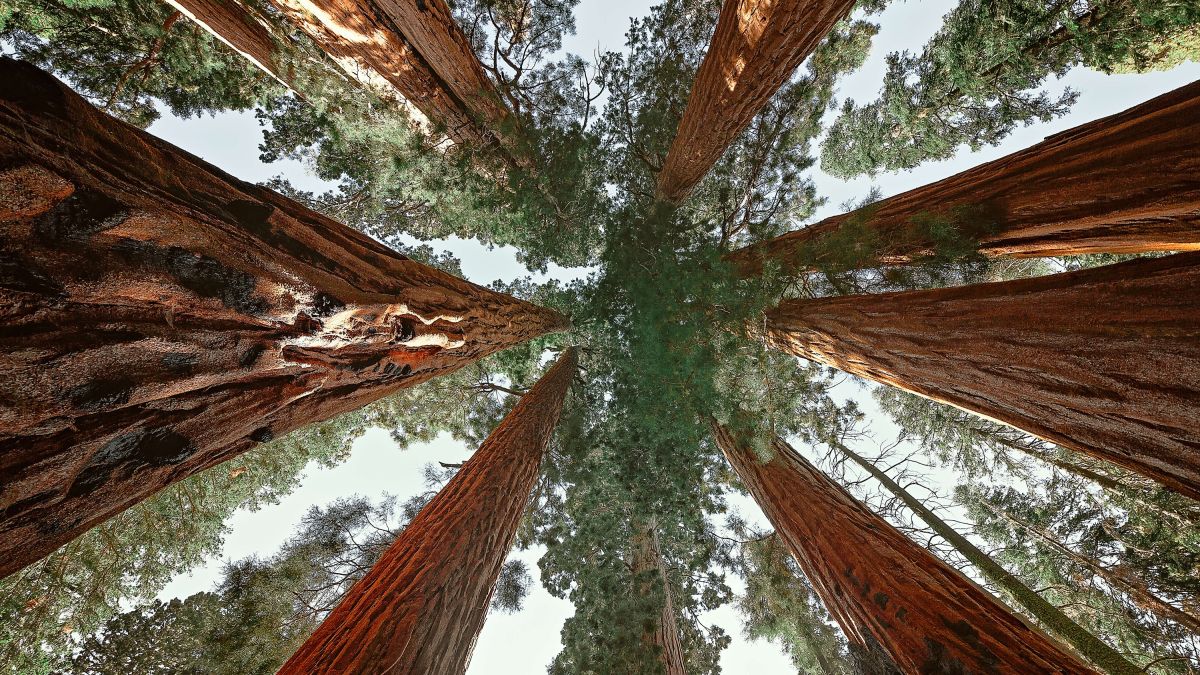It is an old axiom that Beauty is in the eye of the beholder. Not everyone sees the appeal of a Kandinsky, Mapplethorpe, or even Van Gogh. But when it comes to Nature’s artworks, a giant Sequoia for instance, no one denies the awe they instill—or the sense of humility and impermanence. And it’s not necessarily scale that elicits a long, wandering gaze—but form, color, scent and time.
So back to that giant Sequoia–only let’s make it miniature, so that we might bring it home and even meditate with/on it. If you were to consider the time, effort and care that goes into a proper creation of a redwood bonsai, your awe would perhaps not equal seeing the real thing in the forest, but your appreciation would certainly rise. There is more than the horticultural skill required. The properties of Zen art are what truly make a bonsai a bonsai. It is art using the medium of nature via the action of horticulture—and if one approaches it with the Zen philosophy—well then you can be one with the Giant Sequoia.
Here are those Zen qualities:
Asymmetry | For a Buddhist, a perfect form is impossible. So it shouldn’t be striven for in the first place. Everything is somewhat irregular, not balanced, and informal. This should be reflected in the work of art.
Simplicity, plainness, avoidance of complexity | A bonsai should not contain more than necessary.
Austere sublimity. Zen art is not youthful, sensual or opulent. It fits better with advanced age and shows a certain rigor and austerity. Removing all external splendor is supposed to lead into the heart of the message. The weathered branches of an old pine, lanky and emaciated by storm and snow, show this sublimity.
Naturalness | This is a concept that needs interpretation. What is meant is not a pine which might occur as well in nature, but a pine that shows the essence of a pine, the prototypical pine. It should not look artificial or even artistic, but effortless and informal, as if it always had been that way and could not be different, as if it hadn’t been styled by man.
Subtle profoundness | The work of art should express more than the shown subject. The pine is not only a pine. It can symbolize dignity, perseverance, the season of winter, closeness to death or virility. It is desirable to have a richness of implications, associations, deepness of thought, innuendos that leave room for interpretation, that also have some vagueness. The tree should not be easy to see through. Its essence might be hidden first and only reveal itself step by step.
Freedom from attachments to mundane things, to habits, conventions, customs, or rules | Zen does not accept constraints of thinking or acting. The transgression of conventional ways of thinking is an essential feature of Zen. A pine that obviously has been designed according to the classical rules of a formal upright tree doesn’t satisfy the requirements of the Zen aesthetic. This doesn’t mean that the rules wouldn’t have any value though. They might be useful for a beginner. But if it enhances the Zen character of a bonsai, the rules should be broken. Rules should enable, not restrict.
Tranquility, loneliness, peace of mind | This is the feeling that a tree should convey. Zen art is directed inwards. Everything that disrupts this peace needs to be eliminated.

The act of creating and tending a bonsai is one of meditation and mindfulness. We can lose ourselves in creating this tiny version of a piece of the cosmos, while at the very same time, endeavor to find our true ourselves. It is even said that creating bonsai is like contemplating a Zen riddle, or Koan.
Consider the remarkable specimen at The National Bonsai and Penjing Museum (National Arboretum) of a Japanese White Pine that began life as a bonsai in 1626. Yes, 1626! How many generations would have carefully and mindfully tended that tree before being gifted to the United States by the Bonsai Master, Masaru Yamaki—a Hiroshima survivor? The tree was a Hiroshima survivor as well.
There are innumerable books, classes, and even Youtube videos that attempt to teach the art of bonsai. But time is what really teaches us how our nature is at its best when working with nature. And what better piece of nature could your Tanglewood conservatory serve to house than your own carefully crafted bonsai?
~ A Note From Dea Schofield

